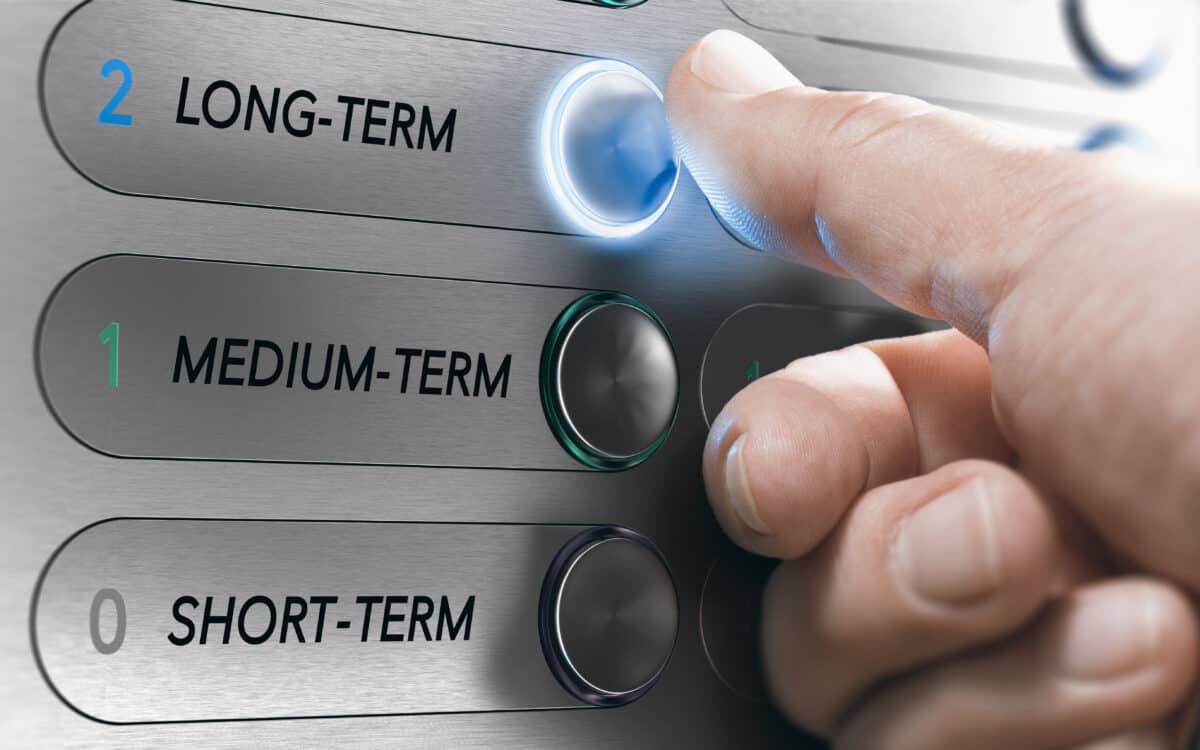Some companies continue to pay high dividends, even if they face an earnings dip, as they know the dip is temporary and a recovery will normalize the payout ratio. BCE (TSX:BCE) is a fundamentally strong company facing short-term headwinds. The telecom sector undergoes network upgrades every six to seven years. Each of these upgrades requires significant capital. However, the network investment pays off as it helps the company earn 43% in adjusted earnings before interest, taxes, depreciation, and amortization (EBITDA).
Behind the 12% dividend yield
In 2024, BCE had $40 billion in net debt and $10.59 billion in adjusted EBITDA, which resulted in a net debt of 3.8 times its adjusted EBITDA, higher than its target of three.
High leverage stressed BCE’s cash flows after the Bank of Canada aggressively hiked interest rates from 0.25% to 5% in 19 months. Hence, BCE stock fell 41% during the rate hike and stabilized in July 2024 when the Bank of Canada started rate cuts.
However, BCE’s stock price again fell in September 2024 as the company paused dividend growth in 2025 after slowing the growth rate to 3% in 2024 from 5% in 2023. Short-term investors saw this as a negative sign, stating that the company’s payout ratio has been above 100% since 2020.
Why is this stock a buy-and-hold for decades?
BCE’s argument is that its long-term dividend payout policy of 65-75% of free cash flow is only to make the policy sustainable. It does not take into consideration accelerated capital expenditures on network upgrades, transitory events, regulatory changes, strategic acquisitions, and other specific events.
Accelerated capital expenditures since 2020 have reduced free cash flow. Hence, the payout ratio will keep fluctuating. It will normalize as the company reduces capex and debt costs and monetizes the network.
BCE’s company-wide restructuring reduced its workforce by over 10%. The company is selling its non-core assets and investing in cloud networks, cybersecurity, digital entertainment, and business solutions to monetize 5G and generate higher average revenue per user.
The restructuring costs, debt costs, and reduced revenue during the transitionary phase could reduce its earnings in the short term. However, the 5G opportunities could boost its EBITDA margin, reducing the leverage ratio.
BCE’s dividend growth potential
In the 2008 global financial crisis, when interest rates peaked at 5%, BCE halved its annual dividend per share by paying semi-annually instead of quarterly. However, it compensated shareholders with 116% dividend growth in 2009, when interest rates fell sharply.
This time, BCE has compensated shareholders for 0% dividend growth by offering a 2% discount on the dividend-reinvestment plan (DRIP) shares in 2025. And let us not forget BCE shares are already trading at a 14-year low.
An opportune time to buy into the fear
If you invest in BCE DRIP in 2025, you can get a 12% dividend yield and accumulate higher DRIP shares at a 2% discount on an already low stock price. To give you an idea, I compared the DRIP shares bought with a $10,000 investment in 2024 and 2025, when the dividend per share is the same at $3.99.
| BCE Stock Price | Year | BCE Dividend Per Share | Annual Investment | BCE Share count | Annual Dividend | BCE DRIP shares |
| $59.49 | 2024 | $3.99 | $10,000 | 168 | $670.32 | 20.12 |
| $33.32 | 2025 | $3.99 | $10,000 | 300 | $1,197.00 | 36.66 |
As of December 31, 2023, BCE’s share price was $59.49. A $10,000 investment could buy 168 shares, which would have paid $670.32 in annual dividends. It could have purchased around 20 DRIP shares. I took the December 31, 2024, price of $33.32 to calculate DRIP shares. However, the actual count may be lower as DRIP shares were purchased quarterly throughout the year, and the share price fell 44% in 2024.
Thanks to the dip, a $10,000 investment on December 31, 2024, could have bought 300 shares and increased your annual dividend to $1,197. Assuming this amount is used to buy DRIP shares at a 2% discount from the $33.32 market price, you could get 36.66 DRIP shares. If the stock price falls further, the count could be higher, and vice versa.

